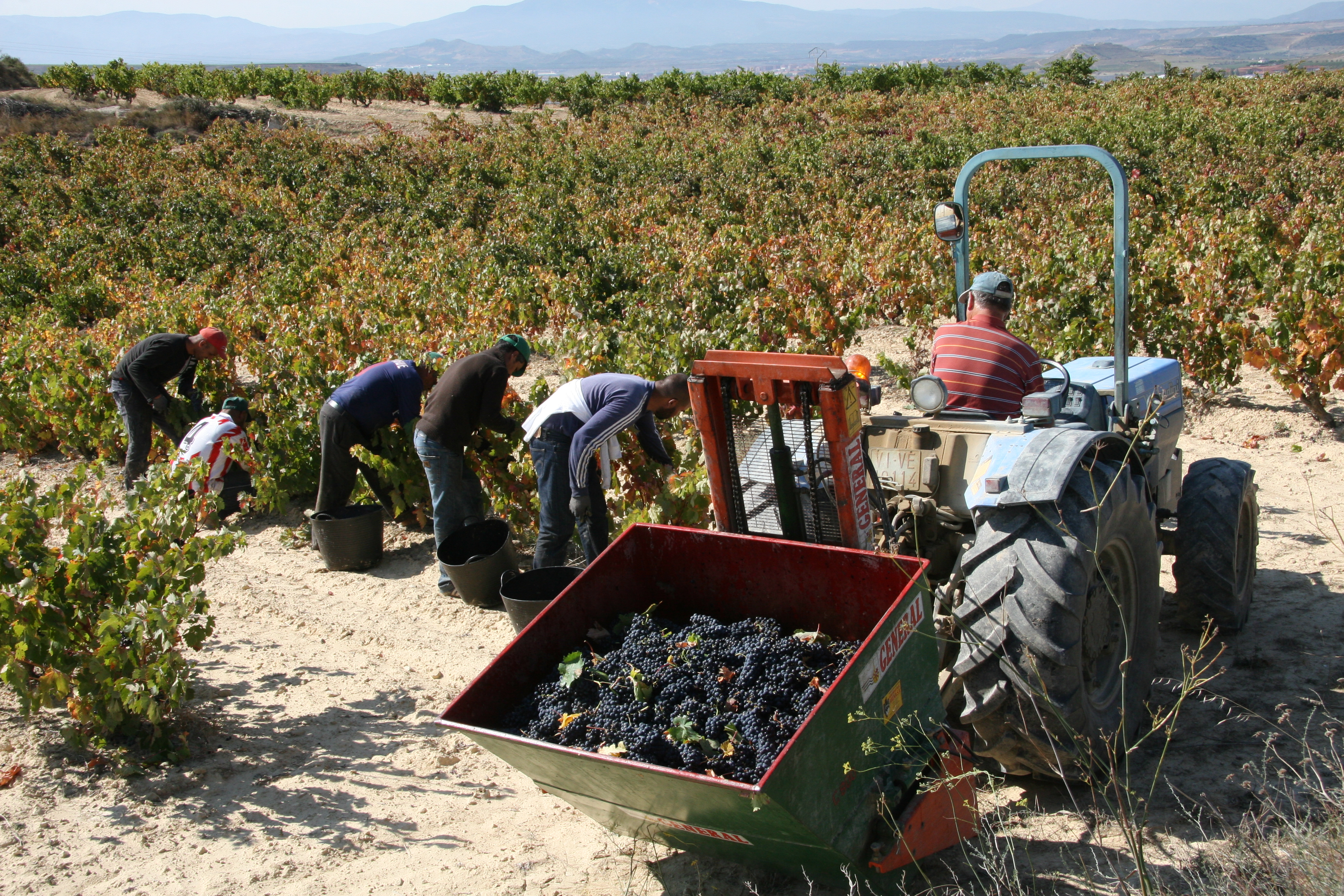Basque ethnography at a glance
As with students at their course-end exams, grape harvest is for Rioja Alavesa winegrowers the litmus test after a year of diligent care of the vineyards: vine pruning, ploughing and reploughing of vines and vineyard rows, crop thinning and weeding, phytosanitary treatments against insects and the dreaded downy mildew and powdery mildew, shoot tipping, offshoot trimming and thinning… It is a reward for a year’s work and effort.
In the autumn when wine grapes are harvested, a flood of colour and joy swamps all Mediterranean farming villages of the Basque Country. The yearly life cycle of the grapevine and climatology of the territory determine the time of harvest. White grapes, mostly of the Viura variety, are picked first, followed by red grape varieties, mainly Tempranillo and also Garnacha, Mazuela and Graciano. St Michael’s Day has traditionally marked the harvest of grapes, in the words of the old Spanish saying Por San Miguel las uvas has de coger. It usually occurs in October but has this year been brought forward to September.
With the changing times and globalization, grape harvest today is quite different from what our parents and grandparents experienced. It has changed and evolved to such extent that harvesting these days is nothing more than picking. Formerly, the start date for the vintage was agreed by councils and local field supervisors, whereas at preset it is the Regulating Council of the Rioja Denomination of Origin and the main wine producers of the area who decide. In the old days the harvesting of wine grapes brought together all members of the family (housewives would join their husbands and children for lunch in the fields); now, by contrast, gypsies and labourers from the Maghreb and Portugal are employed to pick them.
Traditional hand-picking using small sickles and scissors is being substituted by modern machines. Clusters are no longer carried on shoulders in heavy baskets but loaded into vineyard trailers pulled by tractors. Bulks of grapes are transported in tanks, wooden containers moved by horse-drawn carts and wagons being a thing of the past. The romantic and bucolic charm of grape harvest has currently been substituted by the commercial and profit-making activity of picking grapes.
Rioja Alavesa is the most southern region in the Mediterranean side of the Basque Country. It encompasses 13 300 ha of vineyards producing around 89 million kilos of grapes that yield 76 million litres of an excellent wine. The 24th Rioja Alavesa Grape Harvest Festival will be held in Yécora next 17 September. This itinerant celebration rotates annually among municipalities and the Administrative Boards in Rioja Alavesa. The extensive and enjoyable festive programme includes opening speech, treading of grapes from all villages, wine tasting tour of the winery stalls, dancing, popular meal, sports, recreation park for children…
Grape harvest is part of the Rioja Alavesa Vine and Wine Cultural Landscape, which was declared monumental site by the Basque Government in 2014. The Spanish words vid ‘vine’ and vino ‘wine’ derive from Latin vitis and vinus, respectively, both closely related to vita (vida, Spanish for ‘life’). Dionysus and Bacchus are, in point of fact, the Greek and Roman gods of vegetation, wine, joy, life and vintage.
José Ángel Chasco – Etniker Álava – Etniker Euskalerria Groups
Translated by Jaione Bilbao – Language Department – Labayru Fundazioa
Reference for future information: Agriculture (in press), part of the Ethnographic Atlas of the Basque Country collection.
Photographs by the author. Labayru Fundazioa Photographic Archive.




